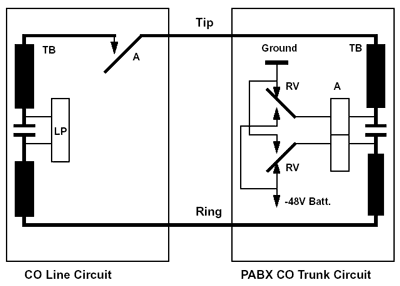 |
 |
Concerns have been expressed that prolonged QSK-CW operation of an Icom HF transceiver fitted with the OMR-109F amplifier keying relay in excess of 10wpm will seriously shorten relay life.
I worked in the telephone-switching industry for many years prior toretiring at the end of 1999. We used various types of reed relays as impulsing("A") relays in trunk interface circuits for telephone exchanges. (Anexample is the "A" relay contact in the left block of Fig. 1.) The mostarduous application was dial-pulse sending at 10 pps (600 ops/min,equivalent to 20 wpm QSK CW.) Typical contact-load parameters were 50~100mA at 50V DC. I do not recall one impulsing relay ever failing in our lab;relay damage in customer installations was generally attributable tolightning surges or power crosses on the line facilities.
I worked with our component engineers testing reed relays at 20 pulses/sec for anapplication in Japan, which uses both 10 and 20 pps dialling. 20 pps equatesto 1200 ops/min, or 4 times the OMR-109F spec. They observed some pulsedistortion at the higher impulsing speed, but accelerated life tests did notindicate any significant increase in contact degradation over time, ascompared to 10 pps testing. (pps = pulses/sec).
From a perusal of the reed-relay literature, I have noted that many of thevendors state expected-life figures as minimum values. For the case of theOMR-109F, the stated no-load value of 100 million ops equates to 5555 hoursof QSK-CW keying at 10 wpm. Even if the life "number" is not aminimum, 5555hours adds up to a lot of on-air time! Per the OMR-109 datasheet, thisfigure is reduced by 50% at 5~10mA/12V (still a pretty respectable numberof operating hours.) Higher load voltage/current will reduce the expectedlife even further, as can be seen from the data sheet.
Our experience with these relays in telephony applications, as describedabove, suggests that the expected-life spec is indeed a minimum. Thus, Ibelieve that projected reed-relay life will probably not be an issue with alight load (e.g. 5mA/12V.) A simple transistor buffer circuit between theexciter relay and the amplifier keying line will accomplish this, whilsteliminating the latency associated with an auxiliary relay.
I am not aware of any OMR-109F relay failure due to extensive CW operation. Had this been an issue, Icom would have specified a different relay many years ago.
It seems improbable to me that the product planners, designers and componentengineers at Icom would have expended precious R&D resources to provideQSK-CW in their higher-end HF transceivers, only to knowingly compromise thisfeature by specifying a relay which would, in effect, put an expiry date onit.
Last updated: 09/25/2019